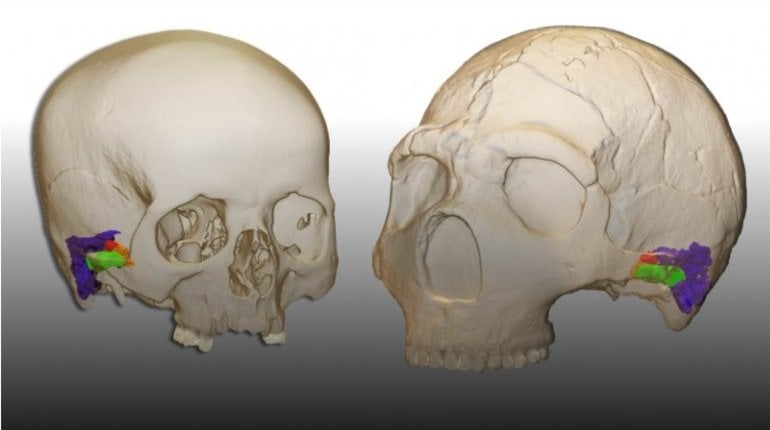The team studied high resolution scans of the inner ears of modern humans, Neanderthals, and a Neanderthal ancestor (Atapuerca site)
“Most previous studies of Neandertal speech capacities focused on their ability to produce the main vowels in English spoken language. However, we feel this emphasis is misplaced, since the use of consonants is a way to include more information in the vocal signal and it also separates human speech and language from the communication patterns in nearly all other primates. The fact that our study picked up on this is a really interesting aspect of the research and is a novel suggestion regarding the linguistic capacities in our fossil ancestors.”
Thus, Neandertals had a similar capacity to us to produce the sounds of human speech, and their ear was “tuned” to perceive these frequencies. This change in the auditory capacities in Neandertals, compared with their ancestors from Atapuerca, parallels archaeological evidence for increasingly complex behavioral patterns, including changes in stone tool technology, domestication of fire and possible symbolic practices.
Thus, the study provides strong evidence in favor of the coevolution of increasingly complex behaviors and increasing efficiency in vocal communication throughout the course of human evolution.
The team behind the new study has been developing this research line for nearly two decades, and has ongoing collaborations to extend the analyses to additional fossil species. For the moment, however, the new results are exciting.
Binghamton University, “Neanderthals Had the Capacity to Perceive and Produce Human Speech” at Neuroscience News

The paper is closed access.
Wouldn’t it be a gas if they found writing too? Some researchers did find Neanderthal art a while back.
See also: Neanderthal Man: The long-lost relative turns up again, this time with documents